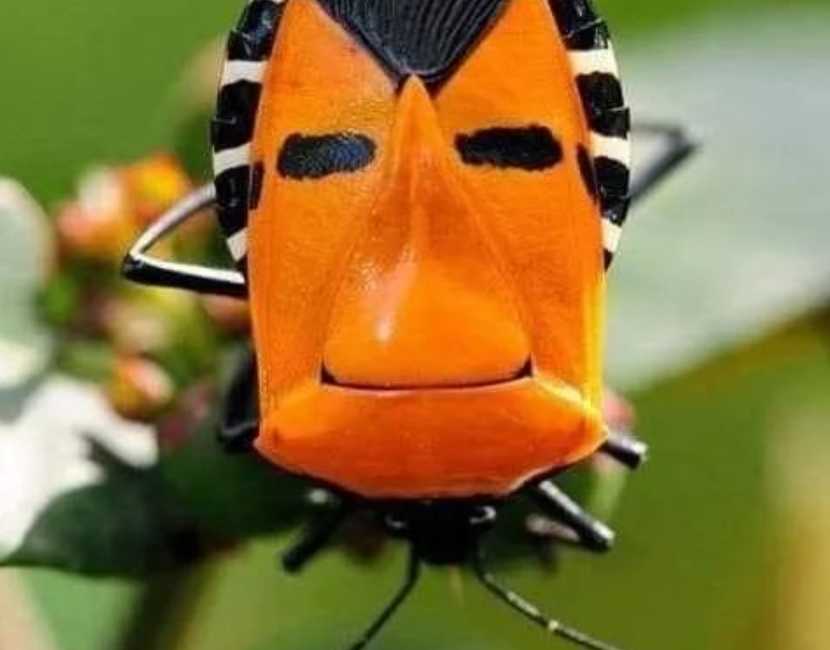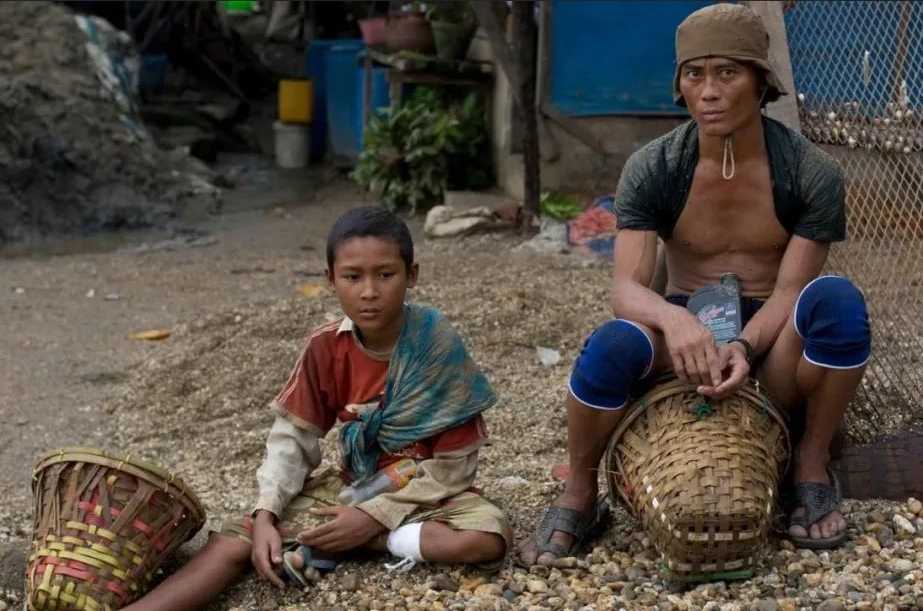
The face bug, a member of the Proconiini tribe in the hemipteran suborder Auchenorrhyncha, earns its name from a remarkable evolutionary trick: the dorsal surface of its thorax and abdomen resembles a human face, complete with "eyes," "noses," and even "mouths." Native to the tropical forests of Southeast Asia, these insects showcase nature’s most whimsical form of mimicry, with each individual sporting a unique facial pattern that defies repetition.
- Facial Mimicry: The bug’s pronotum and scutellum bear markings that uncannily resemble facial features. Oval or circular spots mimic "eyes," while linear grooves or pigmentation form a "nose" and "mouth." Some species even have hair-like setae that resemble "eyebrows" or "facial hair," enhancing the illusion.
- Color and Pattern Variability: While most exhibit earthy tones of brown, black, and cream to blend with tree bark, the arrangement of facial markings varies drastically between individuals. No two bugs share identical "expressions"—some appear to grin, others frown, and some even resemble abstract masks, a rarity in insect mimicry where consistency usually aids deception.
- Predator Deterrence: The face-like pattern is thought to startle or confuse predators. Birds or lizards, confronted with a "human face" on their prey, may hesitate, giving the bug time to escape. This form of mimicry, known as aposematism or intimidation display, capitalizes on the predator’s innate fear of unfamiliar or human-like features.
- Camouflage and Crypsis: Beyond the facial pattern, the bug’s flattened body and bark-like coloration allow it to blend seamlessly with tree trunks. When threatened, it remains motionless, relying on both mimicry and camouflage for survival.
Found in countries like Thailand, Malaysia, and Indonesia, face bugs inhabit lowland and montane rainforests. They prefer to feed on plant sap from broad-leaved trees, using their piercing-sucking mouthparts to tap into vascular tissues. Little is known about their life cycle, though researchers suspect they undergo simple metamorphosis, with nymphs resembling smaller, less pigmented versions of adults.
- Folklore and Myth: In some Southeast Asian cultures, these bugs are seen as omens or spirits, with their unique faces inspiring stories of forest guardians or shape-shifting entities. Their rarity in collections has contributed to their mystique.
- Evolutionary Enigma: Scientists marvel at the diversity of facial patterns within species. Unlike most mimicry, which relies on consistent patterns, the face bug’s variability challenges traditional theories. Some hypothesize that it may confuse predators by preventing them from learning a specific target pattern.
While not currently endangered, face bugs face threats from deforestation and habitat loss. Their reliance on specific forest microhabitats makes them vulnerable to logging and agriculture. For entomologists, they represent a fascinating case study in evolutionary innovation—proof that nature’s creativity knows no bounds, even in the creation of whimsical, face-like designs on tiny insect backs.
From their cryptic forest homes to the wonder they inspire in those lucky enough to spot them, face bugs remind us of the infinite diversity of life on Earth. Each "face" is a unique masterpiece, a testament to the strange and beautiful ways in which evolution shapes the natural world—one quirky, eye-catching pattern at a time.





